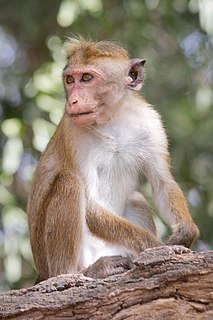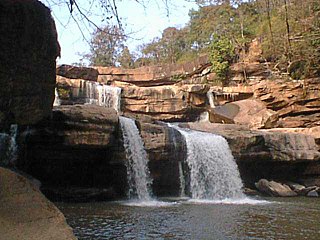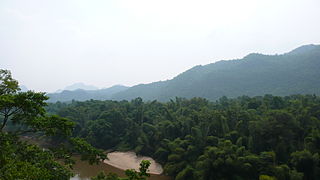| Kaeng Chet Khwae National Park | |
|---|---|
IUCN category II (national park) | |
| Location | Phitsanulok Province, Thailand |
| Coordinates | 17°05′35″N100°37′22″E / 17.09306°N 100.62278°E Coordinates: 17°05′35″N100°37′22″E / 17.09306°N 100.62278°E |
| Area | 261 km² |
| Visitors | 16,551(in 2007) |
Kaeng Chet Khwae National Park is a national park in Phitsanulok Province, Thailand. [1]

A national park is a park in use for conservation purposes. Often it is a reserve of natural, semi-natural, or developed land that a sovereign state declares or owns. Although individual nations designate their own national parks differently, there is a common idea: the conservation of 'wild nature' for posterity and as a symbol of national pride.

Phitsanulok, one of Thailand's seventy-six provinces, lies in upper central Thailand. It borders Sukhothai and Uttaradit on the north, Loei and Phetchabun to the east, and Phichit and Kamphaeng Phet to the south. In the northeast it borders Laos.

Thailand, officially the Kingdom of Thailand and formerly known as Siam, is a country at the centre of the Southeast Asian Indochinese peninsula composed of 76 provinces. At 513,120 km2 (198,120 sq mi) and over 68 million people, Thailand is the world's 50th-largest country by total area and the 21st-most-populous country. The capital and largest city is Bangkok, a special administrative area. Thailand is bordered to the north by Myanmar and Laos, to the east by Laos and Cambodia, to the south by the Gulf of Thailand and Malaysia, and to the west by the Andaman Sea and the southern extremity of Myanmar. Its maritime boundaries include Vietnam in the Gulf of Thailand to the southeast, and Indonesia and India on the Andaman Sea to the southwest. It is a unitary state. Although nominally the country is a constitutional monarchy and parliamentary democracy, the most recent coup, in 2014, established a de facto military dictatorship under a junta.




















